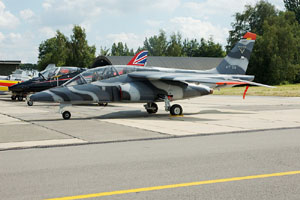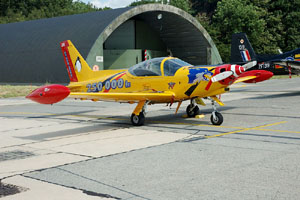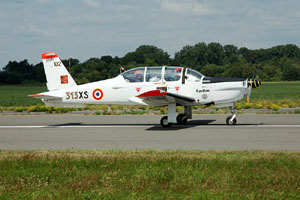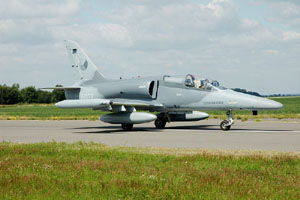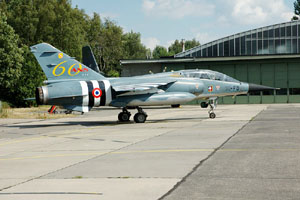Time flies, not just aeroplanes do. In 1979, the then Belgian Air Force, now Belgian Armed Forces Air Component introduced into service the first of 33 Dassault-Breguet-Dornier Alpha Jets as replacements for Lockheed T-33A's. Now, in 2004, the type celebrates it's 25th service anniversary in Belgium.The fleet nowadays flies with 1 Wing. Custom has it that in such an anniversary year an example of the aircraft in question be sprayed in a commerative colour scheme. In the case of AT18 it looks more like an experiment into a new camouflage scheme.
Belgian Alpha Jets are to be moved to the French training base of Cazaux which also houses the same type of aircraft.
